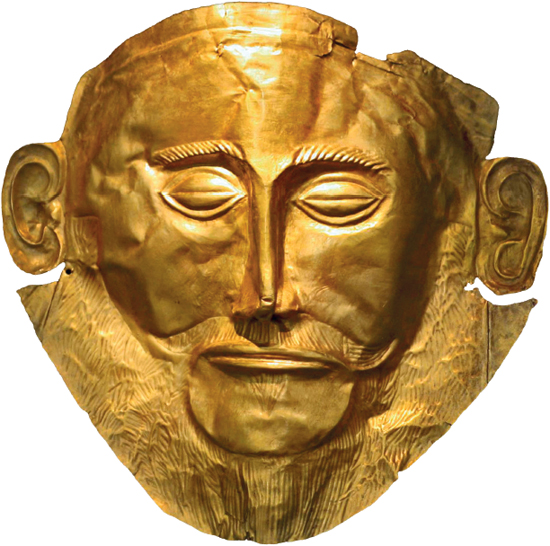

The battle face of the Iliad: brutal, excluding, potent. One of the golden masks discovered by Heinrich Schliemann in the Shaft Graves at Mycenae in 1876. (See here)
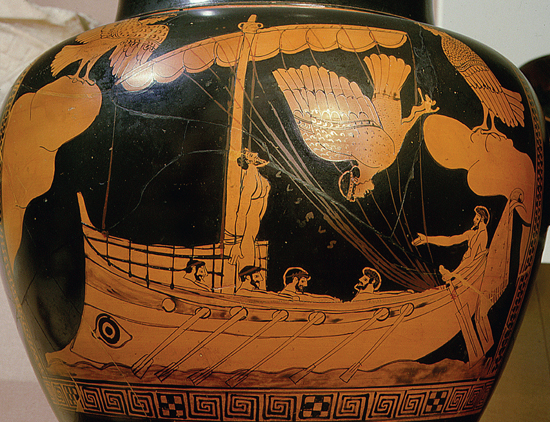
Overleaf: Throbbing with desire for the Sirens, Odysseus, bound to his ship, resists the illusions of nostalgia. From a storage jar made in Athens in about 480 BC. (See here)
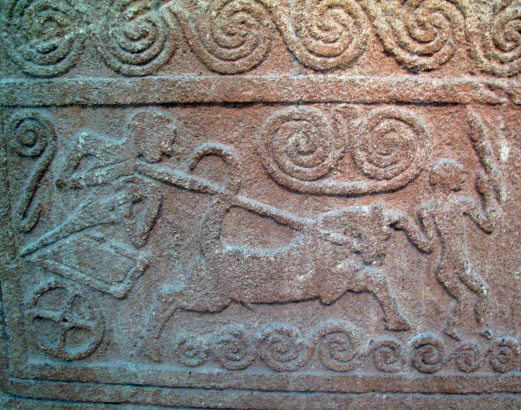
‘Battle was sweeter to them than the land of their fathers.’ The sword-bearing charioteer, hunched over in his war-lust, drives against an enemy. A limestone stele from the Shaft Graves at Mycenae, c.1600 BC. (See here)
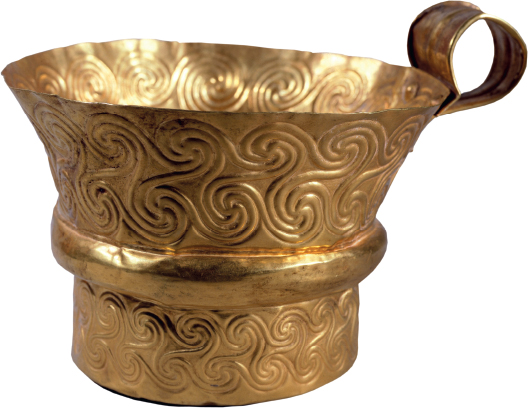
A gold drinking cup covered in the interlaced, bind-and-release spirals which entranced Homer’s world. (See here)
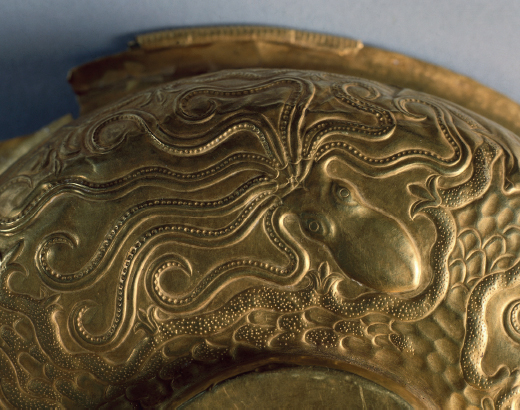
A golden octopus cup from Mycenae, perhaps made by a Cretan, or taken from Crete: the liquid beauties of a southern, palatial sophistication, which Odysseus lyingly claims as his own. (See here)
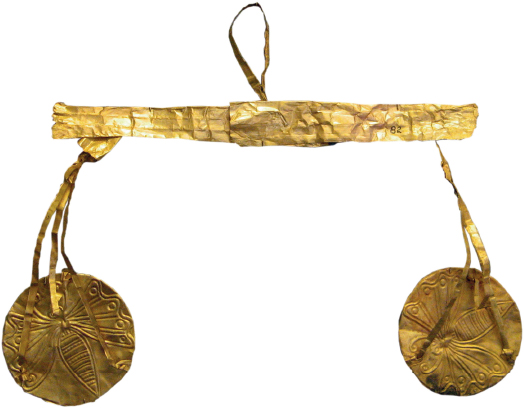
Scales from the Shaft Graves, made of gold so thin they could only have weighed the butterfly souls impressed on them. (See here)
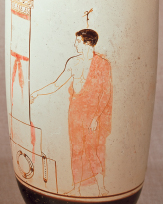
A sixth-century BC lekythos shows the tiny mosquito of a dead man’s soul half-hovering above his head. For Homer, life itself was rich, life-after-death terminally diminished. (See here)
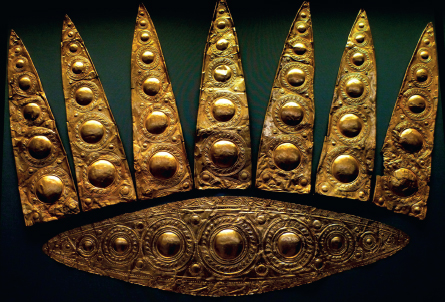
The theatre of dominance: a diadem from the Shaft Graves, the gold beaten as thin as costume jewellery. (See here)
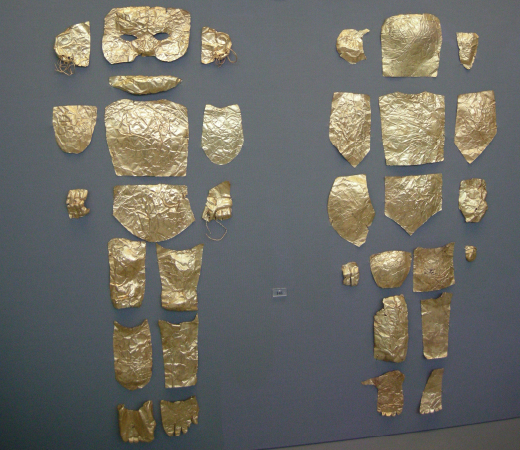
His father’s son: tiny, dead Mycenaean princelings went to their graves encased in gold, front and back, a habit of reverencing the children of the great which goes back to the steppes. (See here)
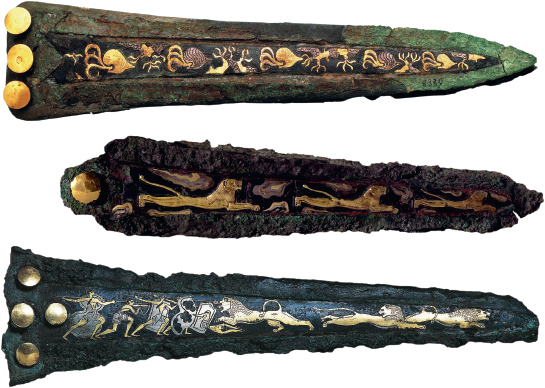
The miniature drama of Mycenaean daggers. The multi-metal inlays of this niello-work find an echo in Homer’s description of the landscapes of the shield of Achilles. (See here)
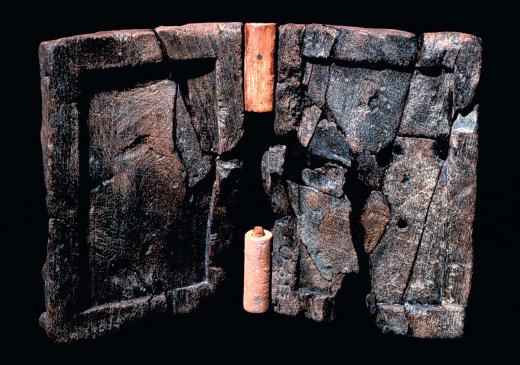
A portable writing tablet from about 1300 BC, found in the wreck at Ulu Burun off the Turkish coast. For Homer’s heroes, writing was a form of threatening magic, reserved for specialists. (See here)
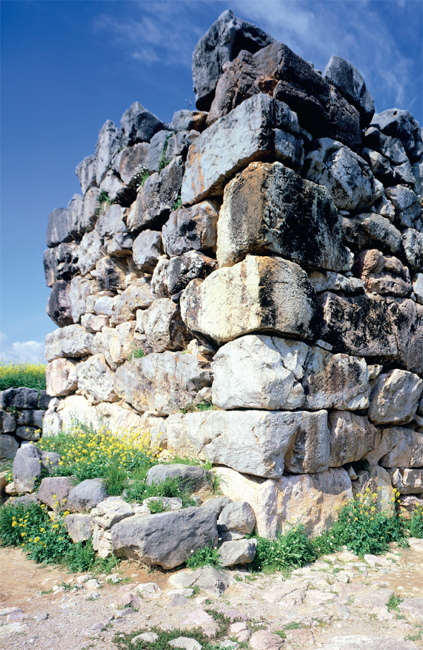
Opposite: The Mycenaean citadel of Tiryns: heroic architecture designed to mimic the walls of the first Hittite-influenced cities besieged by the Greeks. (For giant walls as part of Troy’s metaphorical geography, See here)
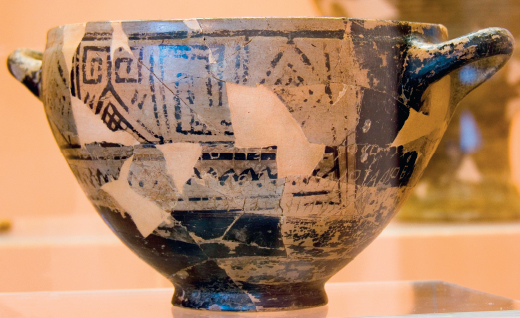
The eighth-century BC wine cup from Rhodes, found on Ischia, with the first surviving Greek hexameters – and the first Homeric joke – scratched into its surface. (See here)
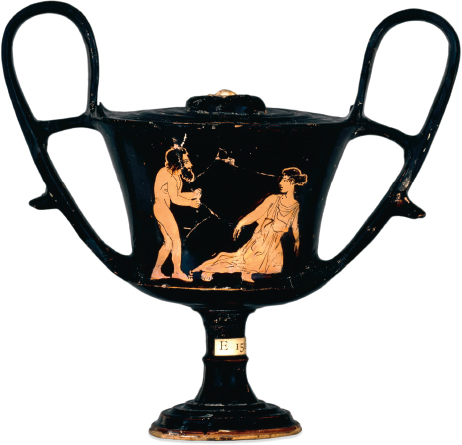
Odysseus, half-dead from days at sea, emerges naked and a little rough to find Nausicaa on the shore. A fifth-century BC Athenian party cup shows the scene which, in Chapman’s translation, first convinced John Keats of Homer’s greatness. (See here)
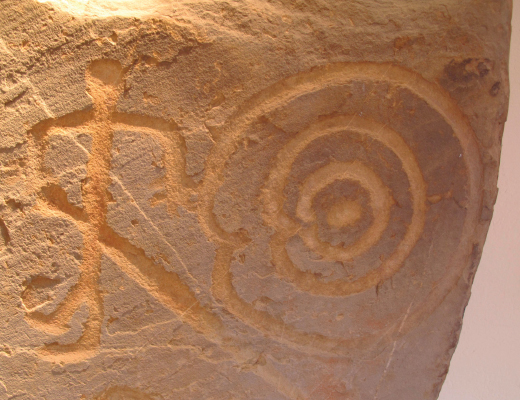
The Iliad in Extremadura: a Late Bronze Age stele now in Badajoz shows a warrior, his sword and the giant shield marked with the concentric rings of the cosmos. (See here)
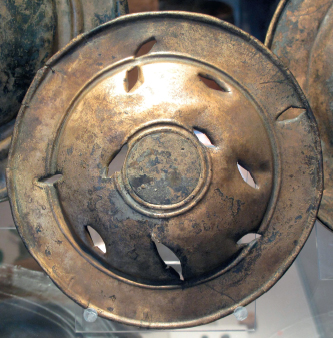
A shield-like piece of Bronze Age horse harness found in the Wiltshire Avon, ritually stabbed and perhaps symbolically killed. Repetitive, insertive killing is at the heart of Homer’s tragic vision. (See here)
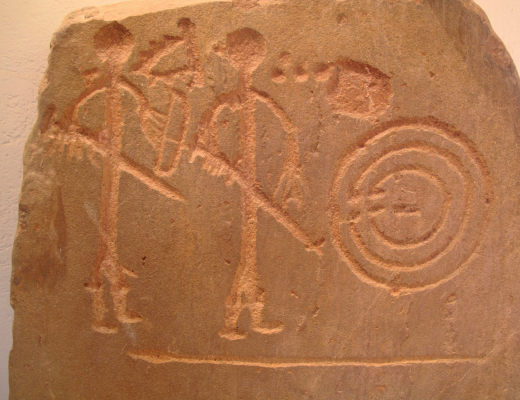
Metal heroes: Extremaduran figures with shield, swords, bow, spear and two objects central to the hero-complex: a bubble-handled mirror, for beauty, and a musical instrument, for epic song. Both men have large, ‘man-slaughtering hands’. (See here)
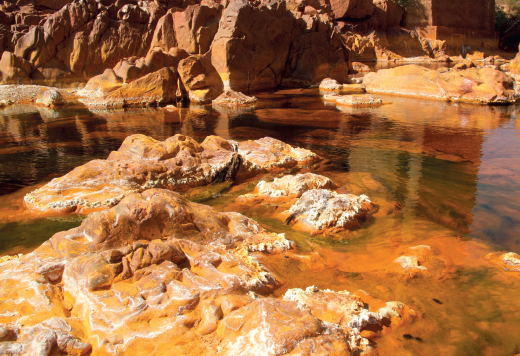
The Rio Odiel, north of Huelva in southern Spain: waters poisoned with the metals that make this a candidate for Homer’s Hades. (See here)
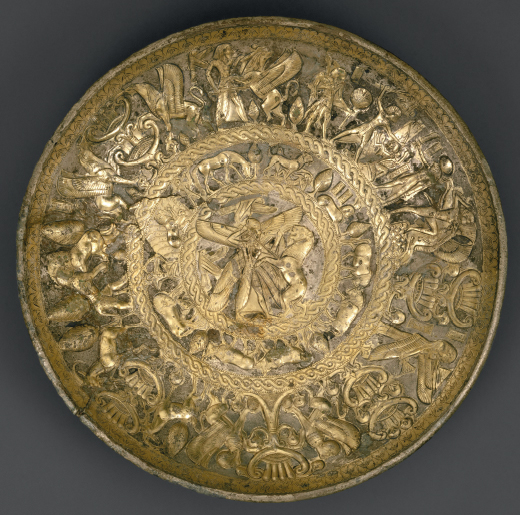
Southern story-telling: the multiple scenes on silver gilt bowls produced in the Near East (this one from Cyprus c.725–675 BC but showing Egyptian, Assyrian and Phoenician stories of battle and triumph) provide a possible model for Homer’s description of the shield of Achilles. (See here)
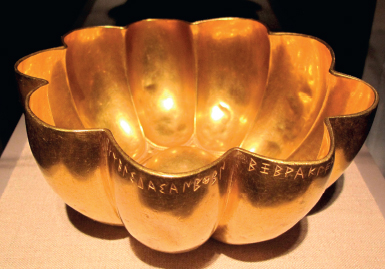
A golden libation bowl from Olympia, now in Boston. Only when Odysseus on the shores of Hades pours all the good juices of the earth on to the ground can the dead reacquire the ability to speak. (See here)
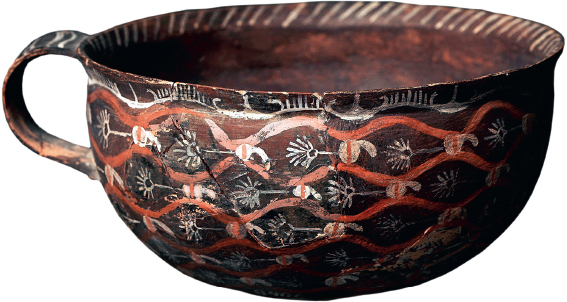
The shape of the south: fluency and fragility in a Kamares eggshell-ware cup from the temple-palace at Phaistos on Crete, c.1900 BC, just as the Greeks were entering the Mediterranean world.
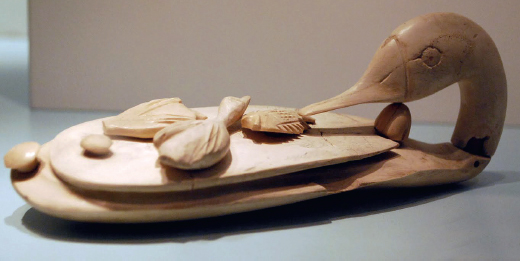
The luxurious world of Sinuhe: an Egyptian ivory cosmetics container in the shape of a duck with fish on her back. (See here)
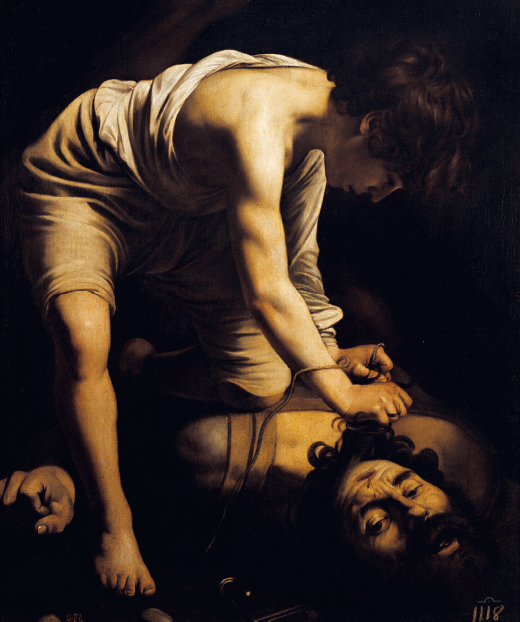
Caravaggio’s first painting of David as he ties a cord around the hair of Goliath’s severed head, painted in 1599 and now in the Prado, Madrid. The triumph of godliness over Homeric self-importance. (See here)

Odysseus’s instrument of revenge: a Mycenaean dagger now in the British Museum, found on Ithaca. Its hilt resembles Near Eastern examples of a kind Odysseus would have been given by the Phaeacians (See here)
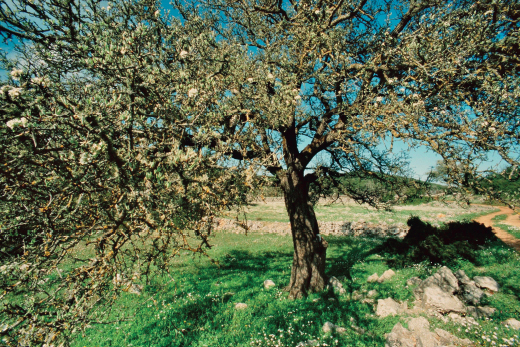
‘The sweetest place any man could imagine’: wild pear tree in blossom on spring meadows at the southern end of Ithaca, March 2007. (See here)
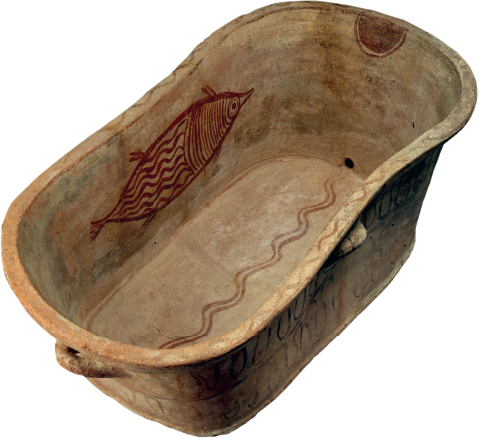
A Cretan bath from the mid-fourteenth century BC, one of the elements of Mediterranean civilisation most greedily adopted by Homeric Greeks. (See here)
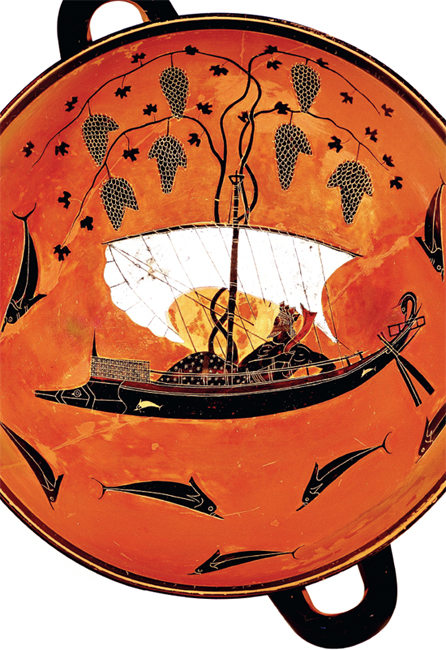
The transforming grace and power of the sailing ship: Dionysus on a reach, on a fifth-century Attic kylix now in Munich (See here)